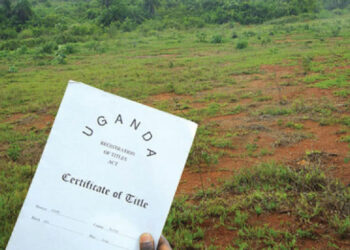By Our reporter
The Government of Uganda has launched a new Green Growth Development Strategy to guide its development. The strategy serves as the blue print towards a socially and economically inclusive development pathway for Uganda as it endeavours to reach middle income status.
The new Green Growth Development Strategy for Uganda provides a blueprint for achieving an inclusive low emissions economic growth pathway that provides for both present and future generations.
“This Green Growth Development strategy will be very instrumental in directing Uganda to achieve the Sustainable Development Goals and national goals at large while building Prosperity for All,” Mr Moses Ali, the first deputy Prime Minister said during the launch ceremony last Wednesday at Imperial Royale Hotel in Kampala.
He said that the Strategy provides a ray of hope for addressing these challenges, adding that; “it presents an opportunity to renew our political commitment to the principles of sustainable development which are already enshrined in our constitution, the NRM Manifesto, Uganda Vision 2040 and the second National Development Plan (NDP II).”

Green growth is described as an inclusive, low emissions economic growth process that emphasizes effective and efficient use of the country’s natural, human, and physical capital while ensuring that natural assets continue to provide for present and future generations.
The Strategy unpacks the key green growth issues contained in NDP II and Vision 2040 and provides the blue print for Uganda’s transition into a green economy. It highlights areas with the highest potential for green growth’s contribution to Gross Domestic Product (GDP), employment, resource use efficiency, social inclusiveness and equity, as well as environmental sustainability. It focuses on five priority areas to promote green grown, including;
- Sustainable transport that promotes mass transport systems for urban areas among other things.
- Planned urbanisation/green cities providing linkage between industrial production in cities to the raw material production in rural areas.
- Sustainable energy with emphasis on greening the energy mix to include solar and wind, efficiency in use and ensuring equity in access to energy.
- Natural resource management with focus on green tourism, water resources management and sustainable use of forests and wetlands, and lastly;
- Sustainable agriculture with concentration on solar powered irrigation, integrated soil fertility management and upgrade of value chains.
“While the strategy is an implementation tool for ensuring that both NDP II and Vision 2040 are achieved in the most sustainable manner, it does not replace them. It actually accelerates their implementation along a sustainable development pathway,” Dr. Kisamba Mugerwa, the Chairperson, National Planning Authority said in a speech read for him by Dr. Godfrey Okot, a member of the NPA executive board.
Dr. Mugerwa further said that once implemented, the Green Growth Development Strategy would boost GDP by 10 percent beyond current projections and create additional four million green jobs by 2040 while reducing greenhouse emissions by 28 percent over the same period.
Dr. Joseph Muvawala, the Executive Director speaking after him added that; “It’s important for us to start thinking about development in terms of protecting Mother Nature. We must protect society, our environmental assets and ensure that we have in place growth and development models that are sustainable.”
Ambassador AttilioPacifici, the European Union Ambassador to Uganda who was present at the launch stressed the EU’s commitment to supporting Uganda in achieving green growth while a panel of economists, environmentalists and policy makers all agreed that in choosing to go green, Uganda was on the right path to inclusive development.
They called on government to emulate the examples of Ethiopia in Africa and Cambodia in Asia in ensuring that the green growth strategy that has been developed is well implemented.
The strategy was developed by the National Planning Authority in partnership with the Ministry of Water and Environment and the Global Green Growth Institute.UNDP provided technical assistance for the development of the strategy with financial support from the European Union.
“UNDP has been working closely with the government, not only to develop this strategy but also to ensure that green growth concepts are incorporated into all its work,” Ms. Rosa Malango, UNDP’s Resident Representative and UN’s Resident Coordinator said in a speech read for her by Ms. AlmazGebru, the UNDP Country Director during the launch of the strategy.
Ms. Gebru further said that UNDP together with the government have mobilised US$ 24.1 million from the Green Climate Fund to implement the Presidential Initiative to restore wetlands – a green growth initiative that will promote community resilience through providing alternative livelihoods for those living close to wetlands. The initiative will be launched at the end of this month.
The Green Growth Development Strategy will be implemented over the next 14 years and is estimated to cost USD 11 billion.
Ms. Gebru further said that UNDP together with the government have mobilised US$ 24.1 million from the Green Climate Fund to implement the Presidential Initiative to restore wetlands – a green growth initiative that will promote community resilience through providing alternative livelihoods for those living close to wetlands. The initiative will be launched at the end of this month.
The Green Growth Development Strategy will be implemented over the next 14 years and is estimated to cost USD 11 billion.
Do you have a story in your community or an opinion to share with us: Email us at editorial@watchdoguganda.com











